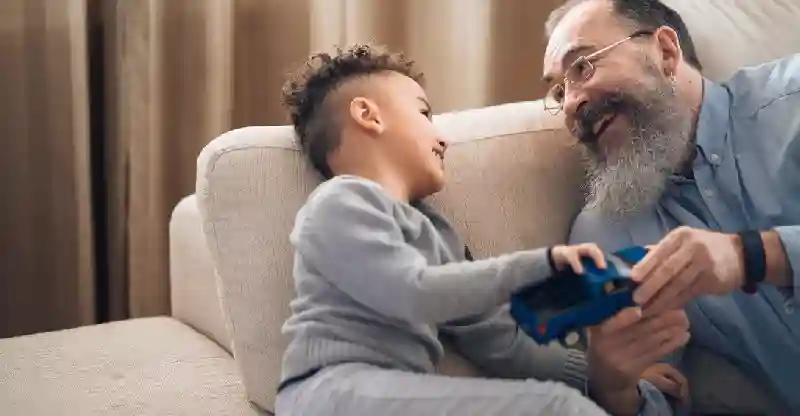
The Power of Simple Conversation with Kids
Talking to children may seem like second nature, but those everyday conversations are doing much more than just filling the silence. Whether you’re chatting over breakfast, walking to school, or winding down at bedtime, simple talks can build strong language skills, boost emotional understanding, and spark curiosity. You don’t need perfect grammar or a lesson plan; simply being present and engaged can make all the difference. At Active Education, we think that the most effective learning often begins with the language we use in everyday life. Here’s how those small conversations lead to massive learning opportunities.
- Building Vocabulary One Word at a Time
The more children hear and use words, the more they will learn. Everyday discussions introduce children to new words in a natural way. Whether you’re talking about pouring milk, tying shoes or observing a puppy in the park, you are introducing them to terms in context; making them simpler to recall.
You can also use descriptive terms like sticky, cold, and noisy to help kids broaden their vocabulary. Repeating words in different settings is also beneficial. Instead of saying “Look at the bird,” say “That is a brightly coloured parrot!” Even pointing out road signs or grocery items might help to introduce new terminology. Simple, daily conversation is an effective language teacher especially when it is based on real life experiences.
- Growing Emotional Intelligence Through Words
When toddlers hear and discuss feelings, they learn how to express and control their emotions. “How did that make you feel?” or “What can we do when we’re upset?” helps children develop emotional intelligence. You can also demonstrate this by gently sharing your own thoughts, “I’m feeling a little tired today, so I may need some quiet time.” This teaches children that their feelings are normal and manageable.
Conversations about emotions help children identify their feelings, better comprehend others and develop empathy skills that are just as vital as reading or counting. Picture books featuring characters feeling emotions can be an excellent beginning point for young children. Ask, “Why do you think she’s sad?” or “What would you do if you were in his shoes?” These simple thoughts build emotional vocabulary and connection.
- Boosting Curiosity with Open Ended Questions
Children are naturally curious, and your questions can help guide their thinking. Instead of giving all the answers, try asking open ended questions like “What do you think will happen next?” or “Why do you think the sky changes colour?” These types of questions spark problem solving, creativity, and deeper thinking.
They also help kids feel that their ideas matter, which builds confidence. Even if their answers are a little off, the conversation is what counts. It shows them that learning is about asking, wondering, and discovering, not just getting things right. At the dinner table, you might ask, “If you could invent a new food, what would it be?” or during a walk, “What do you think lives under that rock?” These types of prompts turn everyday moments into learning adventures.
- Strengthening Connections Through Shared Talk
Talking together also strengthens your bond with your child. When kids feel heard and understood, they’re more likely to open up and share what’s on their minds. This builds trust and connection, which creates a safe foundation for learning.
You don’t need a big block of time. Even small chats during car rides or while brushing teeth help children feel important. Responding with eye contact, interest, and a gentle tone lets them know their words matter. Ask about their day, what made them happy, or what they’re looking forward to tomorrow. These daily moments create memories and emotional security, all through simple conversations.
- Learning Through Repetition and Rhythm
Children love hearing the same stories or phrases again and again and that’s a good thing! Repetition helps build memory and understanding. When you sing songs, tell stories, or use the same bedtime routine phrases, you’re reinforcing language patterns.
Routines like “Time to brush your teeth!” or “Let’s zip up your jacket” might sound repetitive to adults, but to children, they’re powerful learning cues. Nursery rhymes, silly word games, and even made up family songs can help with rhythm, pronunciation, and listening. You might try repeating a silly phrase every time you buckle their car seat or make up a chant while packing lunches; kids thrive on these familiar patterns.
Wrapping Up
You don’t need flashcards or formal lessons to help your child learn. Simple, everyday conversations build strong foundations for language, emotional understanding, and thinking skills. The key is to talk often, listen closely, and be present, even in short moments. So next time you’re folding laundry, walking to school, or waiting in line, take a moment to chat. You might be surprised at just how much your child learns, just by talking with you.
